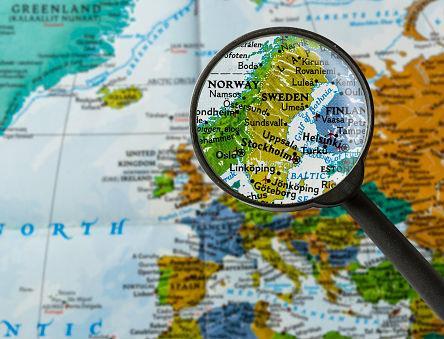A growing number of international retailers are finding their way to the Nordics, Marcel Kokkeel, CEO of Helsinki-listed retail landlord Citycon, told PropertyEU in an interview.

‘More and more retailers have moved recently into the region,’ he said, pointing to the likes of Rituals, JD SportS, Victoria’s Secret and Superdry. ‘We’re seeing a growing number of sexy and trendy names that are new as more and more retailers recognise the value of the Nordic story.’ A brand like Primark is also doing very well in Finland, he added. ‘The Finnish love bargains and discounts. The poor people need it, the rich people love it!’
Another brand that is due to touch down in the region is Uniqlo, he said. ‘The Nordics are really holding out for it. Uniqlo has a down-to-earth offer, they offer quality, value for money and no frills - that’s exactly what Nordic people like!’
With a population of around 26 million, the Nordics counts as the equivalent of a medium-sized country. But with a geographic area of some 3.5 million km2, the region can be somewhat daunting to newcomers, Kokkeel conceded. ‘New retailers need to be educated about the Nordic region. If they play the city game in Sweden, they should focus on Stockholm first. The city has a catchment area of 2 million people. For a brand like Uniqlo, three stores would probably be good enough to get a great reach of customers.’
Unique selling points
The Nordics have a number of unique selling points, Kokkeel said: ‘It has stable economies and a transparent and international business culture and it’s becoming more and more cosmopolitan. It also has the fastest growing cities in Europe in terms of demographics.’
The capitals like Oslo are recording population growth of between 1.2% and 1.5% per annum, he pointed out. ‘There’s not one single country in Europe that is showing this type of solid growth. And the people there have money.’
The population growth is not just confined to the capital cities, he added. ‘Smaller cities are also seeing growth of between 0.5% and 1%. ‘We’re seeing more people coming to the cities from the north of the region, urbanisation started late in the Nordics. And in cities like Stockholm and Oslo, we’re also seeing people coming from other countries. They come for the jobs.’
Residential development
As a result, a lot of residential development is currently taking place in Stockholm. ‘You see lots of cranes in Stockholm, but the developments are not speculative, there’s no housing bubble. There’s real demand in Stockholm. Stockholm has a very liberal attitude and a tremendous amount of jobs are available. The unemployment level there is one of the lowest for Europe, at around 3.5%-4%.’
A lot cross-migration is taking place within Scandinavia, Kokkeel said. ‘You see the Fins going to Stockholm and the Swedes in Oslo. The Polish are the second biggest group in both Stockholm and Oslo.’ Helsinki is also growing fast in terms of its population, he added. ‘As a country Finland lags the others, with growth of around 0.5%. But Helsinki is doing quite well. There’s a divergence with the rest of Finland.’










